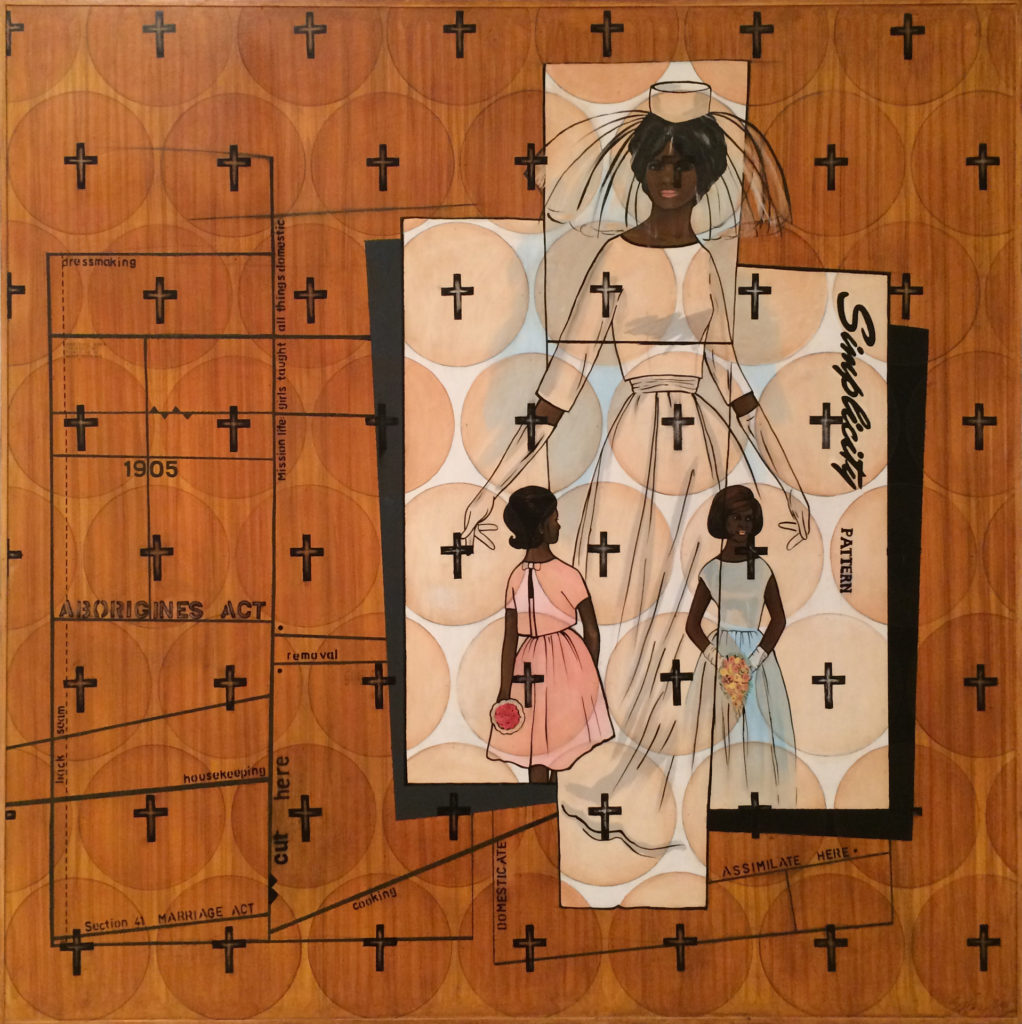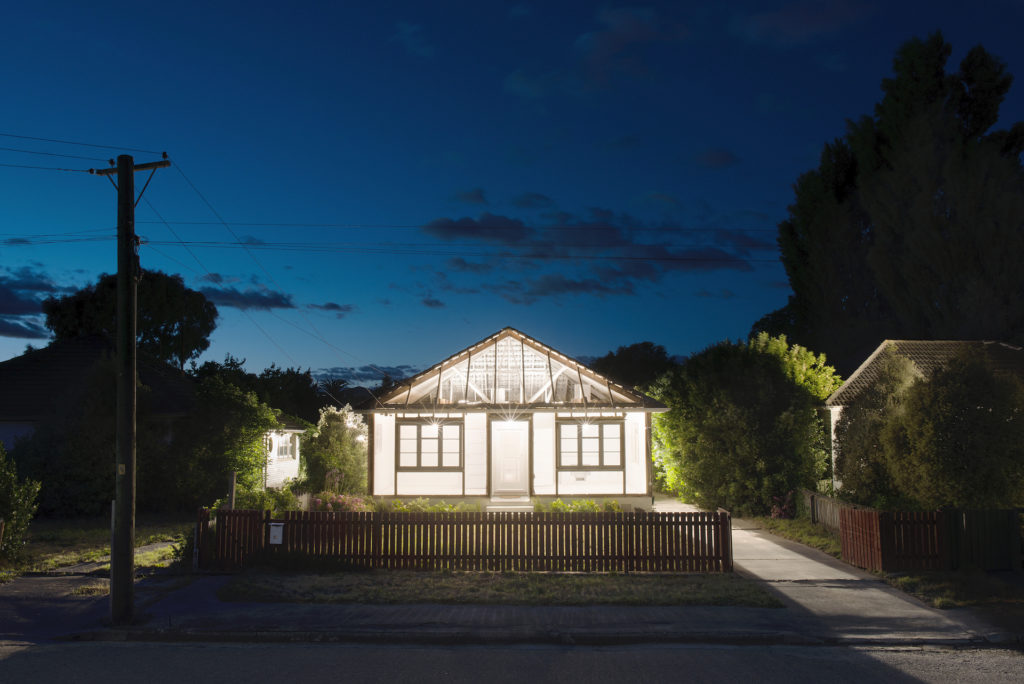Belinda Hermawan looks at two powerful art exhibitions at the John Curtin Gallery that investigate the structure and meanings of home.
The meaning of home
3 March 2020
- Reading time • 6 minutesPerth Festival
More like this
- This Angel soars, even on one wing
- Power of language written on the walls
- Oh! What an extraordinary experience
Review: Sandra Hill, ‘Mia Kurrum Maun’ (‘Far from Home’), and Ian Strange, ‘Suburban Interventions 2008-20’ ·
John Curtin Gallery, 15 February 2020 ·
Review by Belinda Hermawan ·
Sandra Hill’s “Mia Kurrum Maun (Far from Home)” and Ian Strange’s “Suburban Interventions 2008-20” are two powerful exhibitions that unapologetically interrogate the psychological interior of “home” in relation to particular cruelties inflicted by external forces.
Hill brings to the forefront a confronting part of our history that has been almost erased from mainstream Australian discourse, namely the government sanctioned ‘homemaker’ programs implemented between 1910 and 1970 by state agencies and church missions. After being forcibly removed from their families, Aboriginal and Torres Strait Islander girls were made to take part in ‘homemaker’ programs – training them in menial labour so they could work in domestic service for non-Aboriginal people.

A Wadandi woman who was one of the Stolen Generations, Hill cleverly conveys injustice in her works by playing up well-known tropes of 1950s domesticity. Particularly successful is the oil painting, Thin Veneer, which depicts a dressmaking pattern envelope with an Aboriginal woman in a stylish white wedding dress, only for the pattern to highlight what lies beneath this supposed “ideal”: after being stolen from their families, Aboriginal women were to “assimilate here” and be “taught all things domestic” so they could then be deployed as unpaid workers in non-Aboriginal homes.
Hill’s work skewers the belief that Aboriginal people needed “saving” from an “uncivilised” way of life. Reminiscent of a paper-doll dress-up game, Re-Dress presents five outfit choices for an Aboriginal woman: first, a traditional garment held up by a branch, and the remainder bright, tailored clothes on coat-hangers.
The Aboriginal woman who is in a traditional booka skin cloak appears throughout the colourful “Home-maker” series in a hair salon, a nicely appointed bedroom, at afternoon tea and in a kitchen. The white men and women, oblivious to her discomfort, are painted in monochrome – void of colour and, by their actions, of empathy.
Hill uses layers of imagery to convey the complex, multi-generational damage Aboriginal women have experienced, whether it’s the partitioning of land referred to in Na-ga-lia steal; to purloin, the government-issued pamphlets featured in Selling Assimilation – Get Your New Life Here!, or the white fringed aprons in Divine Devolution and The White Dress.
In an intervention of a different kind, West Australian artist Ian Strange’s photo-media projects reflect on the aftermath of manmade and natural disasters on suburban neighbourhoods, with the aim of placing “the psychological interior of the home on to its exterior”.
Strange’s projects are captivating in scale and effect – at first glance you may think he has used Photoshop to paint over images of suburban houses. Instead, in locations all over the globe, he has worked with residents, community members, film crews and volunteers to paint, wallpaper, cut through, illuminate or burn existing structures.

Suburban 2011-13 speaks of the devastation of the 2008 global financial crisis and sub-prime mortgage collapse in the United States. Whole houses are painted black as if relegated to shadow. Targets, crosses and spotlights are painted on frontages. A farmhouse is now red, like a Monopoly token. They evoke an awe-inspiring sense of a bigger, God-like force able to reach down and interfere as it pleases, only for the viewer to remember this financial crisis was manmade. The two-storey high slogans of HELP, SOS and RUN in the later Island 2015-17 are a chilling echo of the consequences of capitalist aspiration.
Set in Christchurch’s residential “Red Zone”, Final Act 2013 stunningly pays off in its ambition. Cutting into the facades of these abandoned New Zealand houses, Strange literally projects light into and out of them to illuminate the power of our idea of home and the feeling of safety we attach to it. The accompanying video installations for Final Act and Suburban are fully immersive, homing in on individual details and also capturing the whole. Reduced to their frames or frontages, these houses – and, by extension, ourselves – sit exposed.
These two exhibitions are must-see explorations of structures built, structures imposed and structures we still need to dismantle as a Western society.
Pictured top: Sandra Hill, ‘Homemaker 9 – the Hairdresser’, from the exhibition, ‘Mia Kurrum Maun’ (‘Far from Home’) at the John Curtin Gallery.

Like what you're reading? Support Seesaw.






